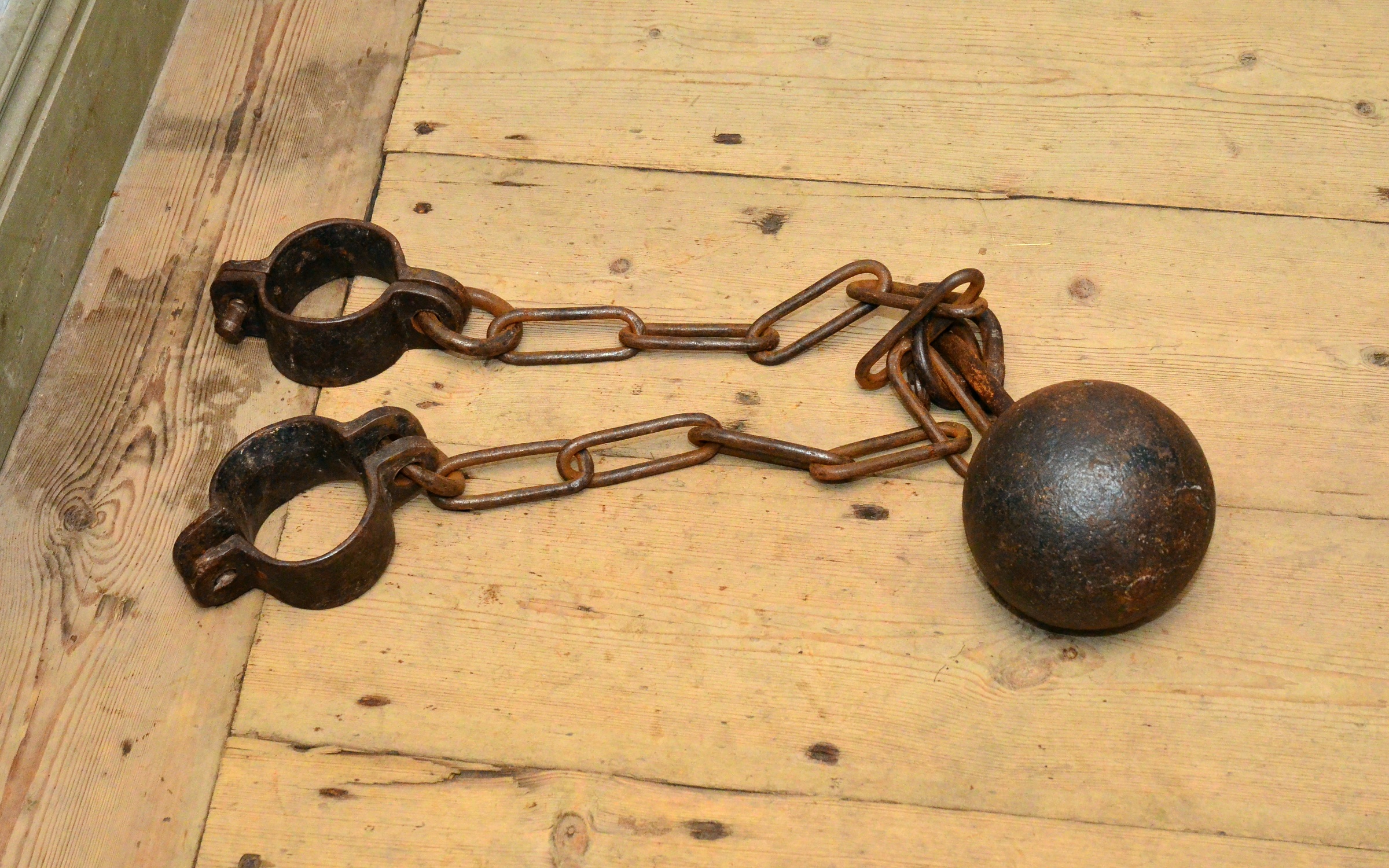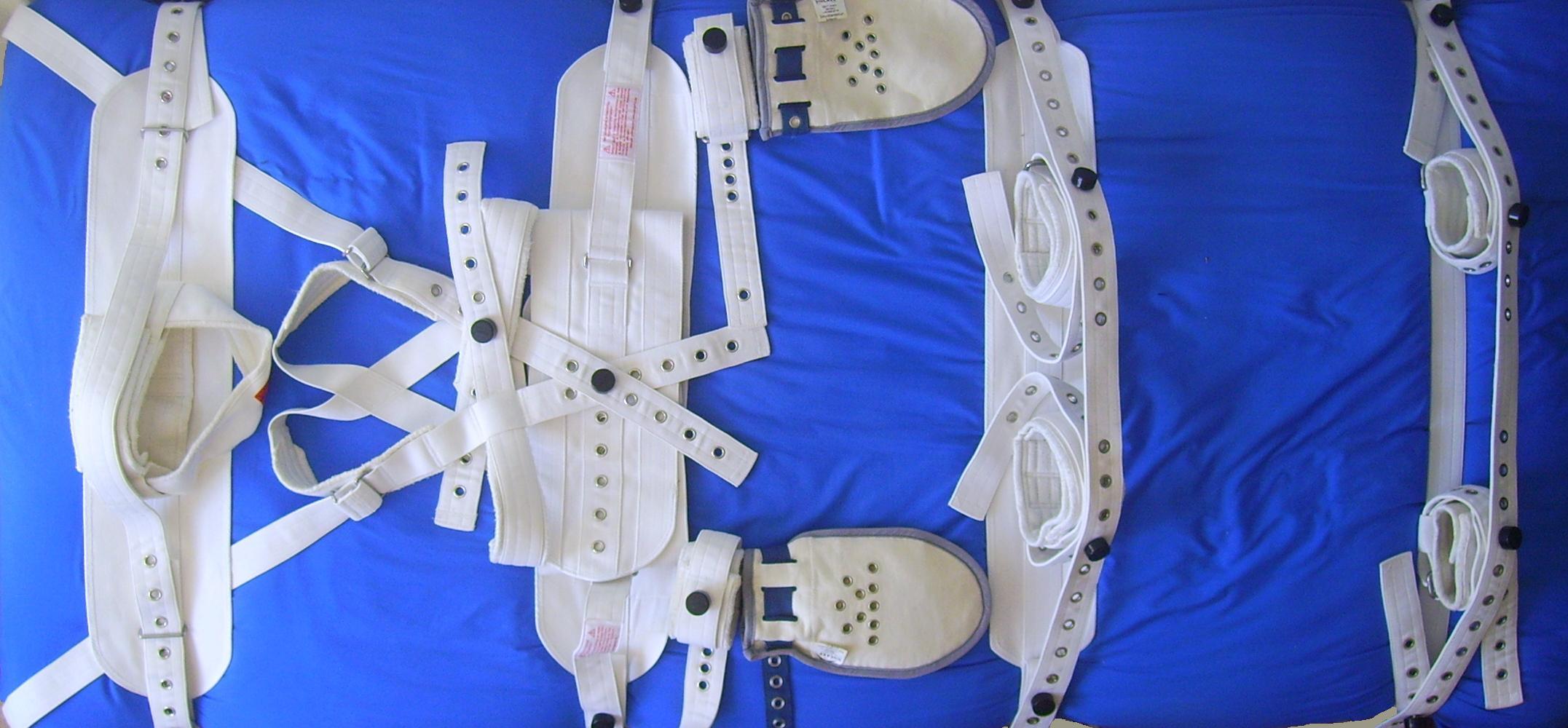|
Ball And Chain
A ball and chain (also known as leg irons) is a physical restraint device historically used to bind prisoners of both adolescent and adult ages. Their use was prevalent in the Americas.Charles N.Pede, "DISCIPLINE Rather Than JUSTICE: Courts-Martial and the Army of Occupation at Corpus Christi, 1845–1846", ''The Professional Bulletin of Army History'', No.101 (Fall 2016), p.46. From the 17th century until as late as the mid-20th century this form of punishment was often used in conjunction with other methods of confinement. A type of shackle, the ball and chain is designed so that the weight of the iron ball at the end of the short chain restricts and limits the pace at which its wearer is able to move, making any attempt at escape much more difficult. The weight of the ball would typically be determined by the court, typically ranging from five to twenty-five pounds (2.27 - 11.34 kg). See also *Electronic tagging Electronic tagging is a form of surveillance that uses ... [...More Info...] [...Related Items...] OR: [Wikipedia] [Google] [Baidu] |
Physical Restraint
Physical restraint refers to means of limiting or obstructing the freedom of a person's or an animal's bodily movement. Basic methods Usually, binding objects such as handcuffs, legcuffs, ropes, chains, straps or straitjackets are used for this purpose. Alternatively different kinds of arm locks deriving from unarmed combat methods or martial arts are used to restrain a person, which are predominantly used by trained police or correctional officers. This less commonly also extends to joint locks and pinning techniques. Purpose in humans Physical restraints are used: * primarily by police and prison authorities to obstruct delinquents and prisoners from escaping or resisting British Police officers are authorised to use leg and arm restraints, if they have been instructed in their use. Guidelines set out by the Association of Chief Police Officers dictate that restraints are only to be used on subjects who are violent while being transported, restraining the ... [...More Info...] [...Related Items...] OR: [Wikipedia] [Google] [Baidu] |
Legcuffs
Legcuffs are physical restraints used on the ankles of a person to allow walking only with a restricted stride and to prevent running and effective physical resistance. Frequently used alternative terms are leg cuffs, (leg/ankle) shackles, footcuffs, fetters or leg irons. The term "fetter" shares a root with the word "foot". Shackles are typically used on prisoners and slaves. Leg shackles also are used for chain gangs to keep them together. Metaphorically, a fetter may be anything that restricts or restrains in any way, hence the word "unfettered". History The earliest fetters found in archaeological excavations date from the prehistoric age and are mostly of the puzzle lock type. Fetters are also referenced in ancient times in the Bible (, , ) A variety of restraint types already existed in Roman times. Some early versions of cup lock shackles existed at this time. These were widely used in medieval times, but their use declined when mass production made the manufactur ... [...More Info...] [...Related Items...] OR: [Wikipedia] [Google] [Baidu] |
Electronic Tagging
Electronic tagging is a form of surveillance that uses an electronic device affixed to a person. In some jurisdictions, an electronic tag fitted above the ankle is used for people as part of their bail or probation conditions. It is also used in healthcare settings and in immigration contexts. Electronic tagging can be used in combination with the global positioning system (GPS), but for short-range monitoring of a person that wears an electronic tag, radio frequency technology can be used. History The electronic monitoring of humans found its first commercial applications in the 1980s. Portable transceivers that could record the location of volunteers were first developed by a group of researchers at Harvard University in the early 1960s. The researchers cited the psychological perspective of B. F. Skinner as underpinning for their academic project. The portable electronic tag was called ''behavior transmitter-reinforcer'' and could transmit data two-ways between a ''base stat ... [...More Info...] [...Related Items...] OR: [Wikipedia] [Google] [Baidu] |
Physical Restraint
Physical restraint refers to means of limiting or obstructing the freedom of a person's or an animal's bodily movement. Basic methods Usually, binding objects such as handcuffs, legcuffs, ropes, chains, straps or straitjackets are used for this purpose. Alternatively different kinds of arm locks deriving from unarmed combat methods or martial arts are used to restrain a person, which are predominantly used by trained police or correctional officers. This less commonly also extends to joint locks and pinning techniques. Purpose in humans Physical restraints are used: * primarily by police and prison authorities to obstruct delinquents and prisoners from escaping or resisting British Police officers are authorised to use leg and arm restraints, if they have been instructed in their use. Guidelines set out by the Association of Chief Police Officers dictate that restraints are only to be used on subjects who are violent while being transported, restraining the ... [...More Info...] [...Related Items...] OR: [Wikipedia] [Google] [Baidu] |




